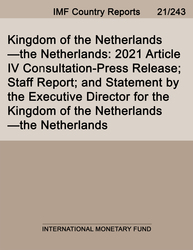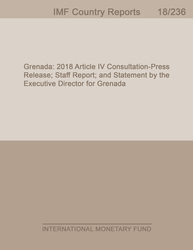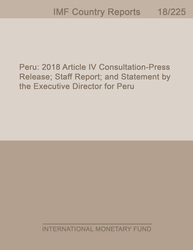
Kingdom of the Netherlands—the Netherlands: 2021 Article IV Consultation-Press Release; Staff Report; and Statement by the Executive Director for the Kingdom of the Netherlands—the Netherlands
2021 Article IV Consultation-Press Release; Staff Report; and Statement by the Executive Director for the Kingdom of the Netherlands—Netherlands
READ MORE...
Volume/Issue:
Volume 2021
Issue 243
Publication date: November 2021
ISBN: 9781589068735
$5.00
Add to Cart by clicking price of the language and format you'd like to purchase
Available Languages and Formats
| English |
Prices in red indicate formats that are not yet available but are forthcoming.
Topics covered in this book
This title contains information about the following subjects.
Click on a subject if you would like to see other titles with the same subjects.
Finance , Labor , Money and Monetary Policy , Public Finance , Business and Economics - Statistics , International - Economics , government finance statistics yearbook , insolvent firm , housing market vulnerability , household debt , transparency policy , COVID-19 , Labor markets , Financial sector risk , Europe , Global
Also of interest
Summary
The Dutch economy was more resilient than the average Euro area economy in 2020 owing in part to a high rate of digitalization of activities that allowed a large share of the work force to work remotely, while the strong policy response mitigated the impact of containment measures. A strong recovery is underway, with pre-pandemic GDP level to be exceeded in 2021:Q4, and the labor market has tightened considerably. The economy is forecast to grow by 4.0 percent in 2021 and 3.3 percent in 2022, on the back of strong consumption and investment, supported by increasing coverage of vaccines. Near-term risks to the outlook are roughly balanced, driven by the uncertain trajectory of the pandemic on the downside, while a fuller than expected drawdown of savings accumulated in the pandemic would further support domestic demand and growth. Further out, real estate market developments present additional risks.
Copyright © 2010 - 2025
Powered by:
AIDC



